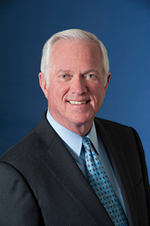OKLAHOMA CITY DEMOGRAPHIC/ECONOMIC FORECAST – Roy Williams
Some very significant trends began developing about a decade ago in both Oklahoma City and in the Oklahoma City Metro area that have profound demographic and economic implications for our future. There are a few specific examples that illustrate these trends.
First, with regard to Oklahoma City, from 1990 to 2016 (26 year period) Oklahoma City grew from a population of 445,000 to 632,000 – an increase of 187,000. On average this meant the city’s population was growing about 7,200 per year, or 600 every month. If you compare that to Tulsa over the same time frame, Tulsa went from 368,000 to 404,000 – an increase of 36,000. On average Tulsa was growing about 1,400 per year, or 115 every month. So Oklahoma City’s population growth over that time frame was 520% more than Tulsa’s growth.
Second, with regard to the Oklahoma City Metro area, the above mentioned significant trend is compelling. From 1970 through 2005, the metro area added 430,000 in population. That is roughly the combined population of both Tulsa and Stillwater being added to the metro in a 35 year timeframe. That growth computes to an annual population growth rate for the metro of 1.1%.
Here now is the significant new trend that has developed. Since 2005, the metro growth rate has accelerated to 1.6% – which is nearly a 50% increase in the rate of growth. Projecting this out for a few years means that in 2021 we will be a metro of 1.5 million population. This essentially means that in the next 20 years, we will add the equivalent of another Tulsa and Stillwater to our metro population. So what took 35 years to do in the past, will only take 20 years to do in the future.
Finally, since 2010 the Oklahoma City Metro has been the 10th fastest growing large metro (large metro meaning over 1 million population) in the nation – growing twice as fast as the nation as a whole. In approximately the next 20 years, we will be a metro of 2 million population.
Coupled with these demographic statistics are also some significant economic realities. The gross metropolitan product (meaning the value of all goods and services produced in our metro) for the Oklahoma City Metro was $56 billion in 2010. In 2016 that number had increased to $71.3 billion, which is about 40% of the entire State of Oklahoma. This amounts to an increase of over $15 billion or nearly a 30% increase in just 6 years.
Personal Income (meaning the total income of the population) of the metro in 2010 was $48.7 billion. In 2016 that number had increased to $63.5 billion or a 30% increase and projected to be over $68 billion by the end of next year.
Per Capita Income (meaning the average income) of the metro in 2010 was $38,750. In 2016 that number had increased to $46,064 or over a $7,000 increase in per capita income. It is projected to be over $48,000 by the end of next year.
And finally, nonfarm jobs in the metro were 568,000 in 2010. By 2016 the number of jobs had increased by 70,000 to a total of 637,200. It is projected that by the end of next year we will have 650,000 nonfarm jobs in the metro.
In summary, Oklahoma City and the Oklahoma City Metro are vastly different from the State of Oklahoma. Our demographics and economics are very solid and look to be for decades to come.

